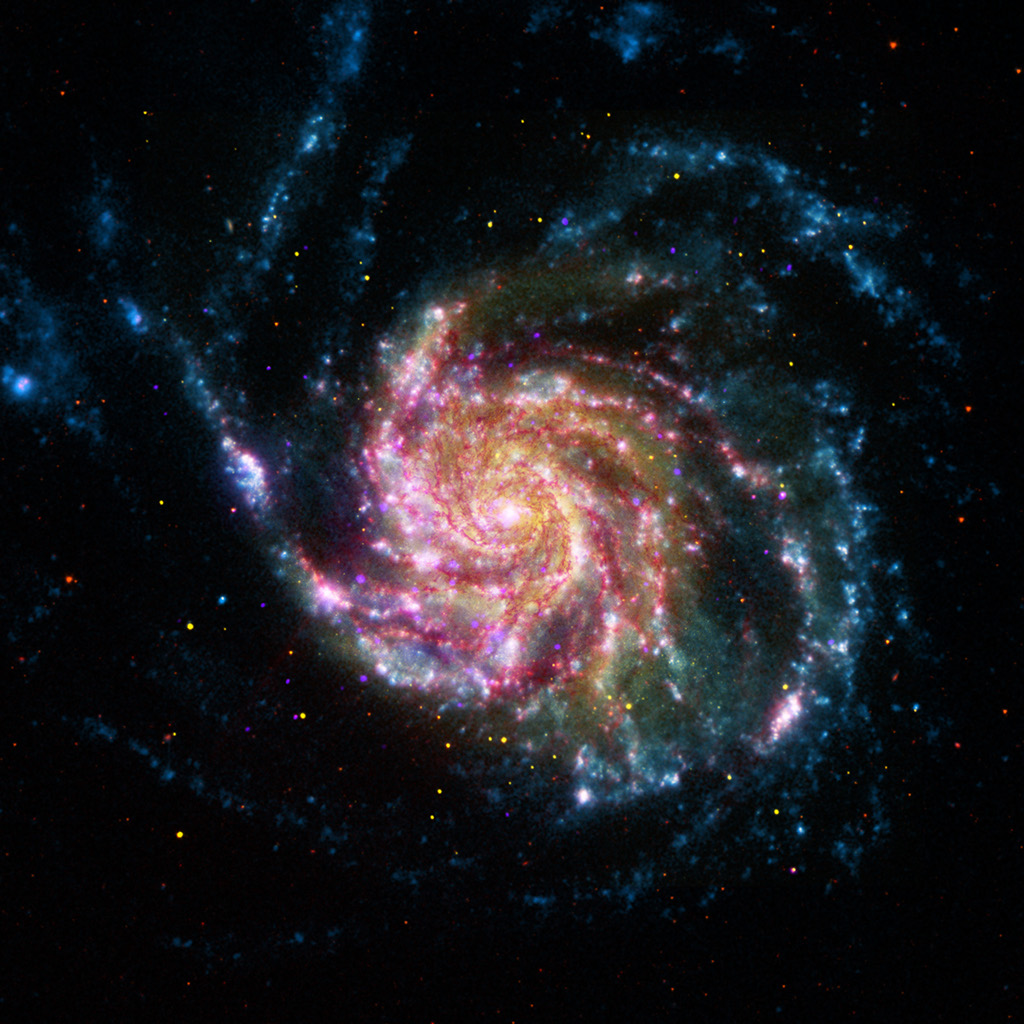2019 November 6
21st Century M101
Image Credit: NASA, ESA, CXC, JPL – Caltech, STScI
Explanation: One of the last entries in Charles Messier’s famous catalog, big, beautiful spiral galaxy M101 is definitely not one of the least. About 170,000 light-years across, this galaxy is enormous, almost twice the size of our own Milky Way Galaxy. M101 was also one of the original spiral nebulae observed with Lord Rosse’s large 19th century telescope, the Leviathan of Parsonstown. In contrast, this multiwavelength view of the large island universe is a composite of images recorded by space-based telescopes in the 21st century. Color coded from X-rays to infrared wavelengths (high to low energies), the image data was taken from the Chandra X-ray Observatory (purple), the Galaxy Evolution Explorer (blue), Hubble Space Telescope(yellow), and the Spitzer Space Telescope(red). While the X-ray data trace the location of multimillion degree gas around M101’s exploded stars and neutron star and black hole binary star systems, the lower energy data follow the stars and dust that define M101’s grand spiral arms. Also known as the Pinwheel Galaxy, M101 lies within the boundaries of the northern constellation Ursa Major, about 25 million light-years away.
21世纪的M101星系
影像来源: NASA, ESA, CXC, JPL – Caltech, STScI
说明:庞大美丽的旋涡星系M101是著名梅西耶星表中的最后一个天体,但它绝不是最小的天体。这个直径约 17万光年的星系非常庞大,几乎是我们银河系大小的两倍。M101也是由罗斯伯爵在19世纪建造的大型望远镜(帕森城的利维坦)最早发现的旋涡星云之一。相比之下,这幅巨大岛宇宙的多波段影像是由21世纪的多台太空望远镜所记录的照片结合而成。这幅按颜色编码的影像在能量上从高到低覆盖了X射线到红外波长的所有波段,来自钱德拉X射线天文台、星系演化探测器、哈勃太空望远镜和斯皮策太空望远镜的影像数据分别呈现出紫色、蓝色、黄色和红色色泽。当x射线数据追踪到M101内的爆炸恒星、中子星和黑洞双星系统周围数百万度气体的位置时,低能量波段的数据则追踪呈现了M101庞大旋臂上的恒星和尘埃。M101也被称为风车星系,位于北天的大熊座内,距离我们约2500万光年远。







